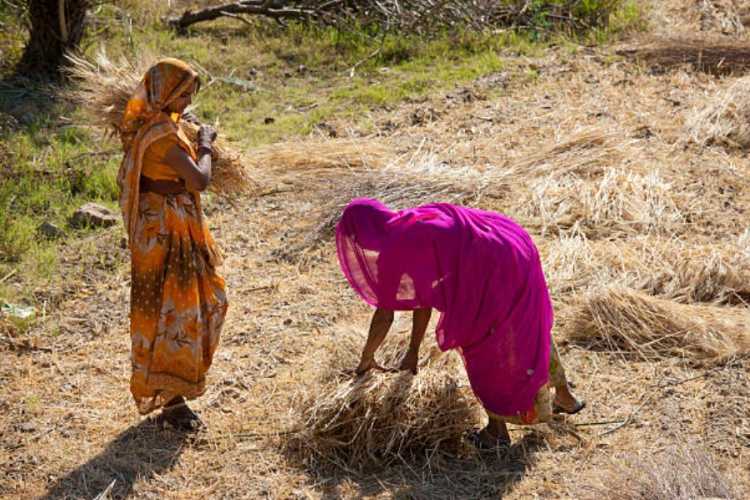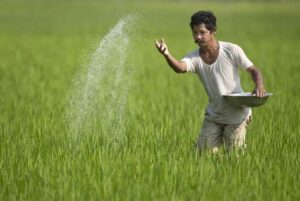
India’s agriculture reforms: Agriculture remains the bedrock of the Indian economy, employing nearly 46% of the workforce and shaping the country’s socio-cultural and economic fabric. Yet, despite its foundational role, the sector contributed just 18.4% to GDP in 2022–23, revealing a structural imbalance that has persisted for decades. Behind this dissonance lies a complex story of remarkable progress clouded by persistent vulnerabilities—fragmented markets, income volatility, outdated policy regimes, and the looming spectre of climate change.
In recent years, calls for reform have grown louder—driven not just by the need to boost productivity or raise rural incomes, but by a broader vision: to make Indian agriculture equitable, resilient, and future-ready. Reform, in this context, is not a matter of choice but a strategic imperative. This article explores the paradox of Indian agriculture, the rationale for urgent reform, and the pathways to a more inclusive agrarian economy.
READ | US-China tariff deal shatters India’s manufacturing hopes
The paradox of progress: Prosperity and precarity
“It was the best of times, it was the worst of times.” Dickens’ famous line perfectly captures the state of Indian agriculture today. On one hand, India has achieved food self-sufficiency, producing over 330 million tonnes of food grains in 2022–23. It ranks among the world’s top exporters of rice, spices, and pulses. Government initiatives like the National Food Security Mission and PM-KISAN, along with technological innovations such as precision farming and AI-powered platforms, have introduced new efficiencies into the system.

Yet, for millions of small and marginal farmers—who comprise over 86% of all farmers—the promise of transformation remains distant. Rising input costs, erratic monsoons, climate-induced disruptions, and market volatility have pushed many into cycles of debt and despair. While agribusinesses thrive, the average farmer continues to struggle, revealing a widening gap between headline success and ground-level reality.
Flawed governance and the limits of agriculture reforms
At the heart of this disparity lies an outdated governance model that relies heavily on input subsidies and centralised decision-making. Despite massive procurement operations, over 40% of post-harvest produce is lost due to poor storage and weak logistics. The much-publicised minimum support price (MSP) regime reaches just 6% of farmers, leaving the vast majority exposed to the vagaries of the open market.
Blindly shifting towards privatisation risks deepening existing inequities. While public-private partnerships (PPPs) hold theoretical promise, they often falter in practice due to weak regulatory oversight and conflicting incentives. Market liberalisation, if not accompanied by state safeguards and rural empowerment, could merely replace old inefficiencies with new exploitations.
Reimagining agricultural reforms
What India needs is a new governance compact—one where the state functions as a strategic investor in rural infrastructure, technology, and education, while also creating transparent regulatory frameworks that encourage private investment without compromising equity.
Agricultural reform must be rooted in democratic values, not dictated by external templates. India must craft its own path—drawing from its socio-economic realities, embracing grassroots participation, and fostering ethical, inclusive growth.
Land fragmentation, inefficient market linkages, and poor logistics continue to constrain productivity. Unless these foundational bottlenecks are addressed, agriculture will remain trapped in its paradox—applauded for record outputs, yet haunted by rural distress.
Diversification, infrastructure, and insurance
A critical area of reform is crop diversification. Over 80% of irrigated land in Punjab and Haryana is devoted to rice and wheat, incentivised by MSPs and procurement policies. This policy skew has depleted groundwater—Punjab’s water table is falling by over 0.5 meters a year—and left farmers vulnerable to ecological shocks. Shifting to region-specific cultivation of pulses, oilseeds, and horticulture can increase incomes and reduce environmental strain.
Indeed, India’s horticulture production reached a record 352 million tonnes in 2022–23, surpassing food grain output. Yet without adequate cold storage and market infrastructure, these gains are at risk. Perishable produce continues to suffer significant post-harvest losses due to logistical bottlenecks, undercutting farmers’ earning potential.
Agricultural insurance also needs urgent attention. The Pradhan Mantri Fasal Bima Yojana (PMFBY), which covered over 3.8 crore farmers in 2021–22, has faced criticism for delayed claim settlements—up to six months in some states—and low farmer awareness. Several private insurers have exited the scheme. Lessons from international models, such as revenue-based insurance in the US and farm income protection in Canada, offer useful insights. These programs integrate real-time data, streamlined digital platforms, and robust institutional mechanisms to offer timely, transparent relief. Adapting such models to India’s context could enhance the scheme’s reliability and reach.
Role of research and collaboration
Research and evidence-based policymaking are central to agricultural reform. India must deepen the collaboration between farmers, scientists, and policymakers to tailor interventions that work across agro-climatic zones. Evaluation of existing policies and pilots—such as those promoting organic farming, smart irrigation, and agritech startups—should be embedded within a feedback loop of continuous learning and redesign.
Rural skilling programs and agricultural education need renewed focus. Building capacity for climate-resilient practices, post-harvest management, and digital literacy can empower farmers to participate in modern markets rather than remain passive recipients of subsidy-based support.
Towards a shared future
Agricultural reform is not the government’s burden alone. It is a national mission that demands collective resolve. Entrepreneurs must innovate for rural India, academics must bring rigour to policy design, and citizens must reward sustainability in their consumption choices. Each of us has a role in revitalising the sector that sustains us.
As Tolstoy observed in Anna Karenina, “Spring is the time of plans and projects.” India stands at such a juncture today. With political will, institutional integrity, and public engagement, the seeds of reform sown now can yield a harvest of resilience, prosperity, and dignity.
Agriculture is not just a sector—it is the soul of India’s economy, its villages, and its future. It must be reformed not only for economic gain, but for justice, sustainability, and national unity. The path to an abundant future lies not in grand announcements but in listening to the soil, the farmer, and the truth that binds them both.
Suvayan Neogi is a research scholar and Dr Deepa Gupta is Associate Professor at Symbiosis International University, Pune.
